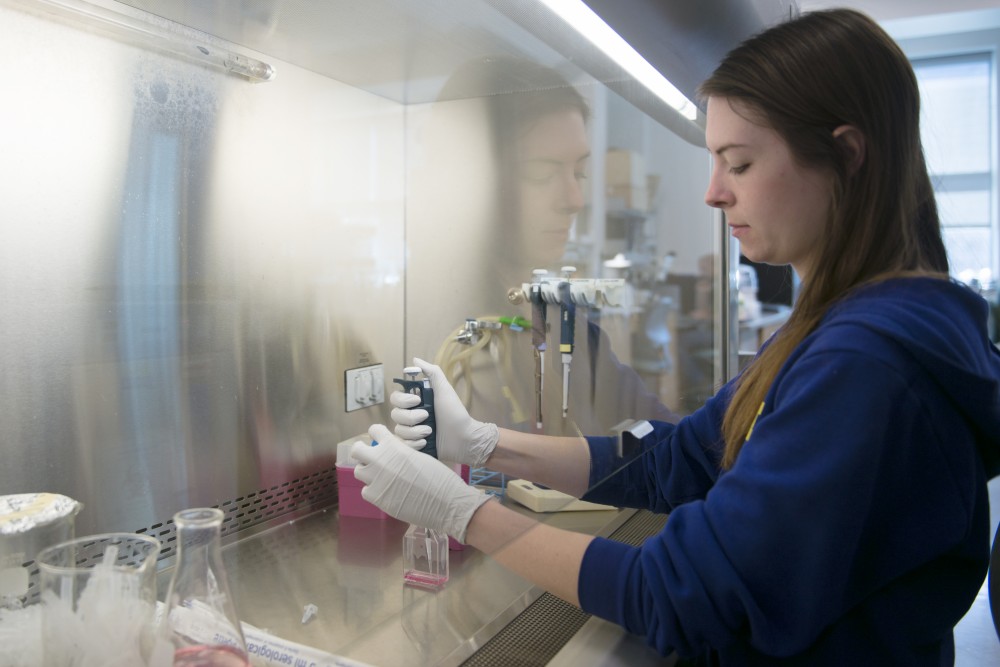While most engineers work to make the most efficient machinery possible, one University of Minnesota professor is doing just the opposite when it comes to engineering cancer cells.
Scientists may be able to stall antsy cancer cells mid-spread by tricking them into sluggishness, according to ongoing research led by David Odde, a biomedical professor at the University and key investigator in a nationwide initiative bringing engineers and other disciplines in treatment research.
Last fall, with an $8.2 million grant from the National Cancer Institute, the University launched the Physical Sciences in Oncology Center to pioneer a nontraditional, engineering based approach to cancer research. The University’s is one of ten such centers in the U.S.
Odde’s research into how to block cancer cell migration and infection is the product of this new approach, which seeks to draw on the strengths of various STEM fields.
“It’s a way for us to jump forward from basic incremental knowledge building to a place where we can have an impact today,” said Bo Connelly, the center’s project manager.
Slowing Down Cancer Cells
The first wave of Odde’s research, published in May, revealed how two drugs can trick cancer cells into sitting still, rather than moving to enlarge the tumor or form a new one.
Odde said cancer cells have two main components that allow them to move: a motor that generates force and clutches that route this force to pull the cell across its terrain.
Further research showed the cells also sense the stiffness — and thus navigability — of their environment.
Through computer simulation, Odde and his team found the two drugs could forcibly relax the cell’s gripping components, weakening their grip and lessening the force they gain by moving.
This makes cancer cells believe the surrounding environment is not ideal for migration and thus slowing the spread, Odde said.
In the coming months, Odde and his team will be developing a more realistic computer simulation, in hopes that it will answer some remaining questions like whether individual cells have unique “ideal” environments, or if there is one optimum for all.
Still, Odde said knowing they can manipulate a cell’s environment preferences means they can potentially slow down cells that are sprinting in an “ideal” environment.
Engineering Cancer: The Project
Odde’s research is only part of a larger push to integrate engineers and other STEM disciplines into cancer research.
Odde and his colleague Paolo Provenzano head the center’s two main projects investigating the internal workings of cancer cells and the external environments that affect them.
Taking this physics-based approach to a typically biology-heavy field opens up new doors in cancer research, Connelly said.
He said physicists’ abilities to build models of cancer cell behaviors help them predict, not guess, which mechanical features of the cells are the best to target and with which drugs.
“If we can do that, we have the potential to realize that dream of precision medicine and targeted therapies in cancer,” he said.
This approach allows for a more efficient and deliberate research process, he said, and could very well become a driving force behind new drug discovery.
But the real key to the center’s research is the overlap between the theoretical and experimentation, as well as engineering and other disciplines.
After working through models to predict cell behavior and treatment techniques, the team tests their theories on real cells.
The team based their published research from cell simulator experiments and lab experiments done on one patient’s cancer cells — now they’re expanding their horizons.
They are accepting and testing sample donations from new brain cancer patients in order to build a more realistic simulator and better understand cell mechanics, Odde said. The team has already studied six new samples.
David Largaespada, University genetics professor and principal investigator for thePhysical Sciences in OncologyCenter, said collaboration between geneticists and engineers has led to discoveries they might have otherwise overlooked had they approached the project from only one angle.
To encourage this interdisciplinary collaboration the center depends on, Connelly says they organize monthly leadership meetings and occasional social gatherings to encourage camaraderie.
“The center brings together engineers with geneticists and biologists and clinicians and mathematicians and immunologists,” Connelly said, “And all these folks bring different perspectives into the project.”

















